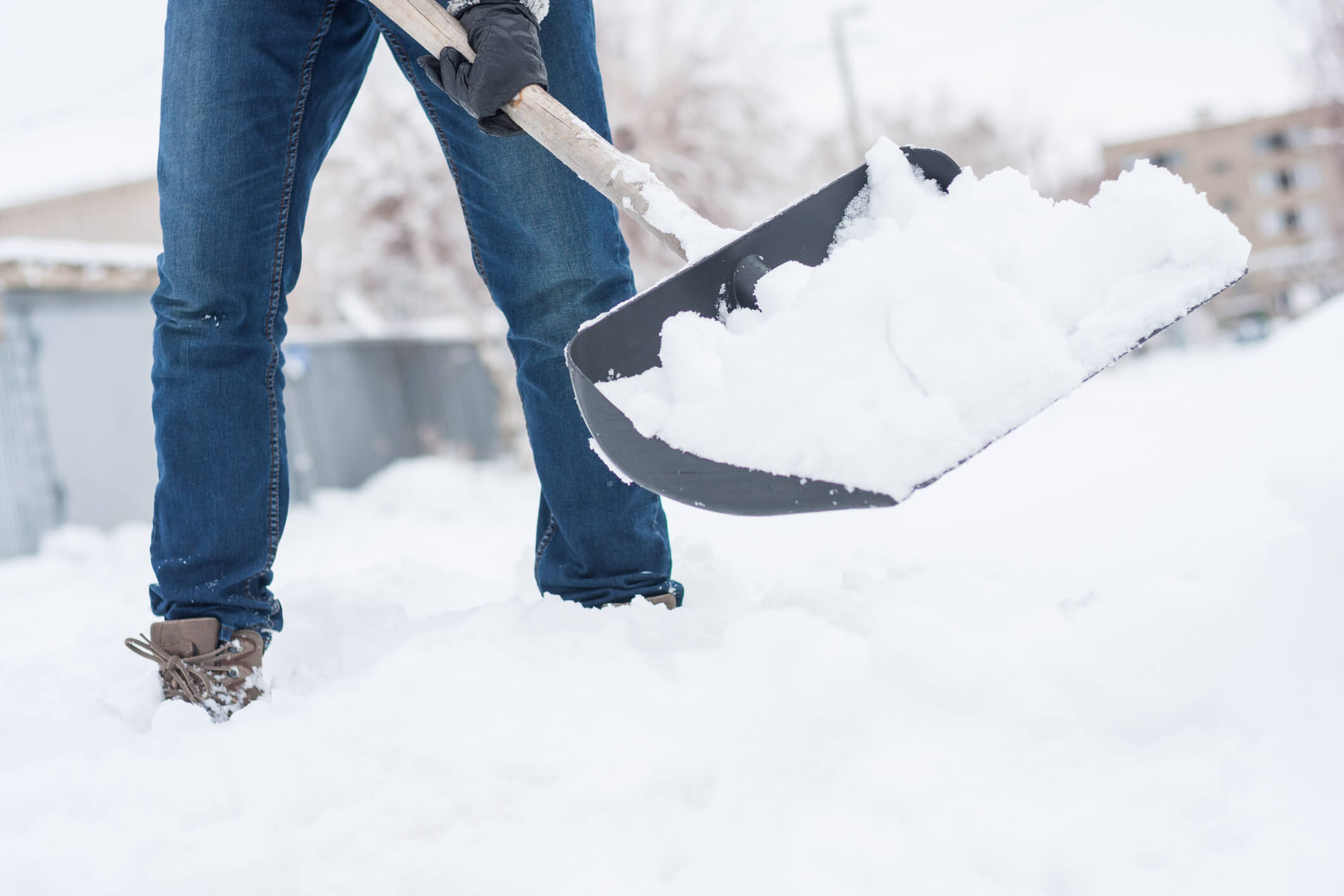
Winter can be a beautiful and busy time of year with glistening, snowy landscapes, holiday fun and long-awaited opportunities to enjoy beloved winter activities, but the commotion of the season and cold temperatures can increase tension in our joints and bones. From shoveling snow, to hanging holiday decorations, to engaging in winter sports such as skiing or ice skating, the sacroiliac joints (SIJs) are being activated, which for many individuals causes discomfort and specifically lower back pain.
Shoveling Activates the SI Joint
Snow removal can be a strenuous activity for people of all ages. And, since we never know how much snow will fall each season or the ranging densities of it, it’s difficult to contemplate the long-term impact this winter chore has on our bodies.
Here’s what happens to the body each time it is tasked to shovel:
First, the core is engaged with every motion that includes bending, lifting, or twisting. Bending brings the sacrum forward, away from the large pelvic bones (ilia). Lifting causes a downward force on the sacrum, causing it to drop forward and down, away from the ilia. And, twisting causes one side of the sacrum to rotate forward, away from the ilia. Combining the three movements with a shovel full of heavy snow can overstress your core (sacroiliac joint) and cause injury to the stabilizing ligaments. As a result, the muscles in the back, pelvis, and upper legs will tighten to help hold the core together. Excess stress causes excess ligament sprain, which results in excess muscle tightness and pain.
Educating yourself on the best practices for safely removing snow such as pushing rather than lifting whenever possible and bending at the hips and knees instead of the low back can help avoid low back injury. Also, wearing the Serola Sacroiliac Belt while shoveling can provide relief for back pain sufferers and aid in the prevention of developing new back problems. The Serola Belt acts like an exterior ligament and provides support and protection to the core ligaments, so the muscles don’t have to tighten and become painful.
Decking the Halls
While holiday decorating may be enjoyable, all the preparations such as handling heavy boxes, rearranging bulky furniture, as well as repetitive twisting and reaching to hang décor also engages our muscles and joints.
For example, reaching overhead stretches the muscles from the hands all the way down to the core, which may cause stress to the ligaments of the sacroiliac joint. As has been shown in other joints, excess stress may cause a joint to suddenly give out, increasing the danger of falling; this may be dangerous when on a ladder hanging Christmas decorations.
Because most people have some instability of the core (sacroiliac joint) ligaments, the back and arm muscles are somewhat tight because they become involved in helping to stabilize the core. Stretching the arms outward, especially when bending backwards, transfers stress, through the muscles, to the core ligaments. When the core is already weak, the muscles tighten further as a protective measure. Too much stress in an awkward position can cause the core to give out. The Serola Belt, by stabilizing the core, allows the muscles to work better and more efficiently, allowing better performance and balance with less chance of injury.
Hitting the Highways and Skyways
December tends to be a season of travel. In fact, the American Automobile Association reported a record number of Americans traveling for the Christmas holiday last year. All travel methods, including car, bus and plane, may cause flare ups for individuals who struggle with chronic back pain, not to mention the sensitivity felt by anyone who has experienced recent trauma to the back. Prolonged sitting is the culprit; it is a simple matter of biomechanics. First, we should understand how the sacroiliac joint is affected during standing vs. sitting.
The sacroiliac joint is a relatively flat joint. Like other flat joints, they are stable when forces are directed perpendicular to the surface of the joint, and unstable when forces are directed in line with it (causing shearing).
Standing allows the force streams from the legs to travel up into the hip, across the large pelvic bones, into the sacrum at an angle that is pretty much perpendicular to the sacroiliac joint. But, sitting removes the legs from the picture. Instead, the force comes directly up from the ischia (sit bones) and provides a shearing force that destabilizes the sacroiliac joint. As a result, the muscles of the back, hip, and upper legs tighten to help stabilize the core. The minor jolts of the road may cause cumulative microtrauma that, over time, increases stress and gradually cause greater discomfort and pain. Utilizing the Serola Belt during travel will stabilize the sacroiliac joint by providing a force that is perpendicular to the joint, negating much of the shearing stress caused by sitting.
___
Finally, it’s important to keep in mind that the winter season may present the above, as well as additional triggers to back pain sufferers and it’s best to be prepared. Consult with your health care provider to discuss the best way to manage your back pain this time of year.
To learn more about what movements may stress your back and core, please see my Dos & Don’ts for the Sacroiliac Joint.
Did this article interest you? Read even more articles like this one by going to our main Blog Page. Do you have any suggestions for topics or maybe have something you would like Dr. Serola to elaborate on? Contact us anytime and let us know or leave a comment below!

